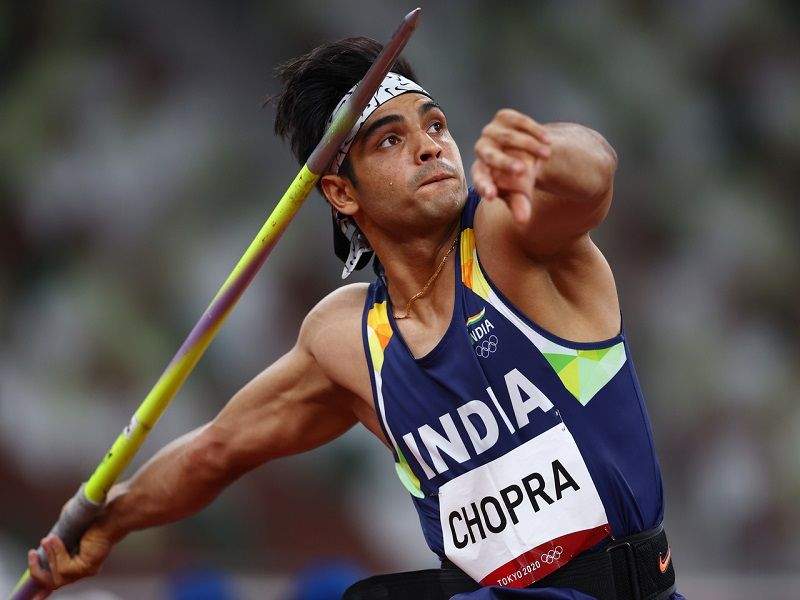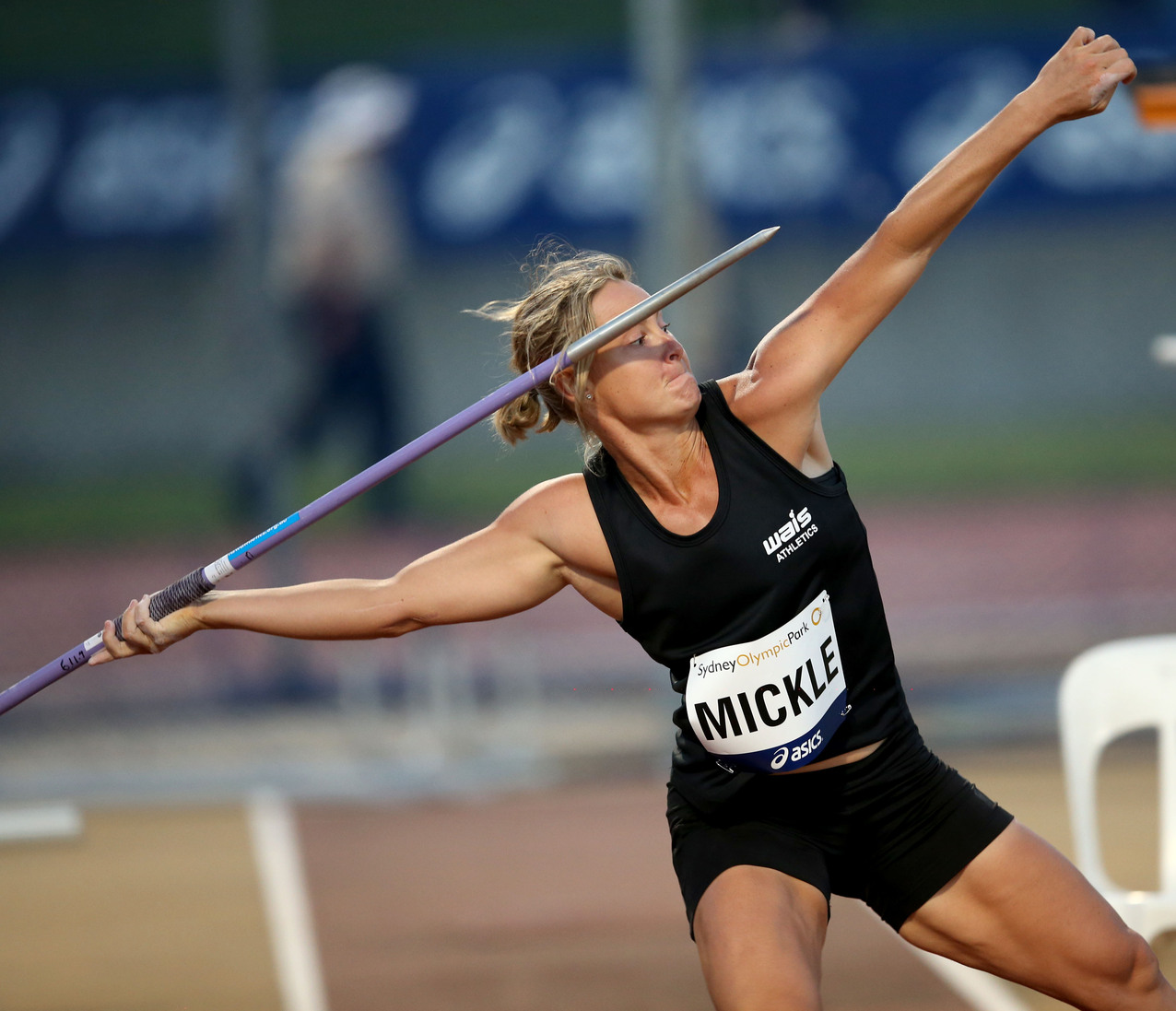Techniques and Mechanics of Javelin Throw

The javelin throw is a technical event that requires a combination of strength, speed, and precision. To maximize throw distance, athletes must master the proper techniques and mechanics of the throw.
Phases of the Javelin Throw
The javelin throw is divided into five distinct phases: grip, run-up, plant, throw, and follow-through. Each phase is crucial for achieving a successful throw.
- Grip: The grip is the foundation of the throw. The athlete holds the javelin with their dominant hand near the center of gravity, with their index and middle fingers wrapping around the javelin and their thumb on top. The non-dominant hand is placed on the javelin, providing support and stability. The grip should be firm but not too tight, allowing for a smooth release.
- Run-up: The run-up is a controlled acceleration phase, where the athlete gains momentum and prepares for the throw. The run-up should be a smooth, continuous motion, with the athlete maintaining a balanced and relaxed posture. The length of the run-up varies depending on the athlete’s individual style and preferences, but it typically ranges from 30 to 40 meters.
- Plant: The plant is the critical moment where the athlete transfers their momentum from the run-up to the throw. The athlete plants their dominant foot, bringing their body to a near-vertical position, and shifts their weight onto their plant foot. The non-dominant leg is lifted off the ground, and the athlete’s body is aligned with the direction of the throw.
- Throw: The throw is the most dynamic phase, where the athlete unleashes their power and propels the javelin forward. The throw is a combination of arm, shoulder, and torso rotation, with the athlete’s body acting as a lever to generate force. The javelin is released at a specific angle, with the athlete aiming to maximize the trajectory and distance of the throw.
- Follow-through: The follow-through is the final phase, where the athlete completes the throwing motion and maintains balance. The athlete continues to rotate their body after releasing the javelin, ensuring a smooth and controlled finish. The follow-through helps to prevent injury and maximize throw distance.
Body Mechanics and Biomechanics
Proper body mechanics and biomechanics are essential for maximizing throw distance. The athlete’s body must be aligned correctly, with optimal muscle activation and coordination. Here are some key biomechanical principles:
- Body Alignment: The athlete’s body should be aligned with the direction of the throw, with a straight line from the feet to the javelin. This ensures that the athlete’s power is transferred efficiently to the javelin.
- Muscle Activation: The athlete must activate the appropriate muscles throughout the throw, including the legs, core, shoulders, and arms. Proper muscle activation helps to generate power and control the throw.
- Joint Angles: Optimal joint angles are crucial for maximizing throw distance. For example, the athlete’s elbow should be slightly bent at the release, and the shoulder should be fully extended.
- Rotation: Rotation plays a vital role in generating power and maximizing throw distance. The athlete’s body rotates from the hips to the shoulders, transferring momentum to the javelin.
Common Techniques, Men’s javelin throw
Elite javelin throwers employ various techniques to maximize their throw distance. These techniques are based on biomechanical principles and individual preferences.
- The “Run-Through” Technique: This technique involves a longer run-up and a more gradual acceleration phase, with the athlete maintaining a relatively low body position during the run-up. This technique emphasizes smooth and controlled movement, allowing the athlete to build up momentum gradually.
- The “Power” Technique: This technique involves a shorter run-up and a more explosive acceleration phase, with the athlete reaching a higher body position during the run-up. This technique emphasizes power and speed, allowing the athlete to generate more force in a shorter time.
- The “Combined” Technique: This technique combines elements of both the “Run-Through” and “Power” techniques, allowing the athlete to customize their approach based on their individual strengths and preferences.
Visual Representation of Javelin Throw Technique
| Phase | Description | Key Points | Illustrations |
|---|---|---|---|
| Grip | The athlete holds the javelin with their dominant hand near the center of gravity, with their index and middle fingers wrapping around the javelin and their thumb on top. The non-dominant hand is placed on the javelin, providing support and stability. | – Firm but not too tight grip. – Index and middle fingers wrapped around the javelin. – Thumb on top of the javelin. – Non-dominant hand provides support and stability. |
[Insert illustration of the athlete holding the javelin with the correct grip.] |
| Run-up | The run-up is a controlled acceleration phase, where the athlete gains momentum and prepares for the throw. The run-up should be a smooth, continuous motion, with the athlete maintaining a balanced and relaxed posture. | – Smooth and continuous motion. – Balanced and relaxed posture. – Length of the run-up varies depending on the athlete’s individual style and preferences. |
[Insert illustration of the athlete running up to the throwing point, maintaining a balanced and relaxed posture.] |
| Plant | The plant is the critical moment where the athlete transfers their momentum from the run-up to the throw. The athlete plants their dominant foot, bringing their body to a near-vertical position, and shifts their weight onto their plant foot. | – Dominant foot planted firmly. – Body brought to a near-vertical position. – Weight shifted onto the plant foot. – Non-dominant leg lifted off the ground. |
[Insert illustration of the athlete planting their dominant foot and shifting their weight onto it.] |
| Throw | The throw is the most dynamic phase, where the athlete unleashes their power and propels the javelin forward. The throw is a combination of arm, shoulder, and torso rotation, with the athlete’s body acting as a lever to generate force. | – Combination of arm, shoulder, and torso rotation. – Javelin released at a specific angle. – Athlete’s body acts as a lever to generate force. |
[Insert illustration of the athlete throwing the javelin, with their body rotating and their arm extending.] |
| Follow-through | The follow-through is the final phase, where the athlete completes the throwing motion and maintains balance. The athlete continues to rotate their body after releasing the javelin, ensuring a smooth and controlled finish. | – Continued rotation of the body. – Smooth and controlled finish. – Balanced posture. |
[Insert illustration of the athlete following through after releasing the javelin, maintaining balance and a smooth finish.] |
Notable Men’s Javelin Throwers and Records

The men’s javelin throw has seen a long and illustrious history, with numerous athletes achieving legendary status through their exceptional skills and dedication. These athletes have pushed the boundaries of human performance, setting world records and inspiring generations of aspiring throwers. This section explores the profiles of some of the most renowned men’s javelin throwers, highlighting their significant achievements, throwing styles, and the impact they’ve had on the sport.
World Record Holders
The world record in the men’s javelin throw has been broken numerous times throughout history, with each new mark representing a significant advancement in the sport. The current world record holder is Jan Železný of the Czech Republic, who achieved a remarkable throw of 98.48 meters in 1996. Here are some of the notable world record holders in the men’s javelin throw:
| Name | Nationality | Best Throw (m) | Year |
|---|---|---|---|
| Jan Železný | Czech Republic | 98.48 | 1996 |
| Seppo Räty | Finland | 96.96 | 1990 |
| Uwe Hohn | East Germany | 104.80 | 1984 |
It’s worth noting that Uwe Hohn’s world record of 104.80 meters, achieved in 1984, was set with a javelin design that was subsequently deemed too aerodynamic and was later banned. This change in javelin design significantly impacted throwing distances, and the current world record of 98.48 meters by Jan Železný reflects the new regulations.
Olympic Champions
The Olympic Games represent the pinnacle of athletic competition, and the men’s javelin throw has consistently produced thrilling contests and legendary champions. Here are some of the most successful Olympic javelin throwers:
- Jan Železný (Czech Republic): Železný is the most successful Olympic javelin thrower of all time, having won three consecutive gold medals in 1992, 1996, and 2000. His dominance in the sport is unparalleled, and he is considered one of the greatest javelin throwers ever.
- Aki Parviainen (Finland): Parviainen won gold at the 1980 Moscow Olympics, demonstrating his exceptional throwing skills and contributing to Finland’s strong tradition in the javelin throw.
- Steve Backley (Great Britain): Backley won gold at the 1992 Barcelona Olympics, showcasing his powerful throwing style and becoming a prominent figure in British athletics.
Throwing Styles and Techniques
Javelin throwers employ various techniques to maximize their throw distance, and these techniques can vary significantly between athletes. Some key factors that influence throwing style include:
- Grip: The grip on the javelin can significantly impact the throw, with athletes using different hand positions and pressures to achieve optimal leverage and control.
- Run-up: The run-up is a crucial part of the javelin throw, allowing athletes to generate momentum and power before releasing the javelin. Different athletes use different run-up lengths and stride patterns to optimize their throwing motion.
- Release: The release of the javelin is the culmination of the entire throwing motion, and it requires precision and timing to maximize distance. Athletes use various release angles and body positions to achieve optimal launch conditions.
The throwing styles of some renowned javelin throwers have become synonymous with their names. For instance, Jan Železný’s smooth and fluid throwing motion is characterized by his exceptional balance and control. In contrast, Steve Backley’s powerful throwing style is known for its explosiveness and strength. These variations in throwing style demonstrate the diverse approaches athletes take to achieve success in the javelin throw.
Top 10 All-Time Men’s Javelin Throwers
The following table showcases the top 10 all-time men’s javelin throwers based on their best throws:
| Rank | Name | Nationality | Best Throw (m) |
|---|---|---|---|
| 1 | Jan Železný | Czech Republic | 98.48 |
| 2 | Seppo Räty | Finland | 96.96 |
| 3 | Andreas Thorkildsen | Norway | 91.57 |
| 4 | Aki Parviainen | Finland | 91.48 |
| 5 | Steve Backley | Great Britain | 91.44 |
| 6 | Tero Pitkämäki | Finland | 91.31 |
| 7 | Boris Henry | Germany | 91.02 |
| 8 | Raymond Hecht | Germany | 90.57 |
| 9 | Kimmo Kinnunen | Finland | 90.31 |
| 10 | Sergey Makarov | Russia | 90.29 |
This list highlights the incredible talent and dedication of these javelin throwers, who have consistently pushed the boundaries of the sport and left an enduring legacy.
The men’s javelin throw, a seemingly straightforward event, often becomes a microcosm of societal expectations. The pressure to perform, to be the strongest, the furthest thrower, mirrors the relentless scrutiny faced by individuals like Hunter Schafer, whose dating life is dissected and analyzed in the public sphere here.
Perhaps the athletes, like the public figures, should be allowed to simply throw, to love, and to exist without the weight of expectations constantly bearing down on them.
The men’s javelin throw, a display of raw power and athleticism, has long been a symbol of masculine prowess. But in a world increasingly defined by fluidity and challenging rigid gender norms, the sport finds itself in the shadow of figures like hunter schafer young , a young actress who embodies a more progressive and inclusive vision of identity.
Perhaps, in the future, the javelin throw will reflect this shift, embracing a broader range of athletes and challenging the outdated notions of what it means to be a champion.
